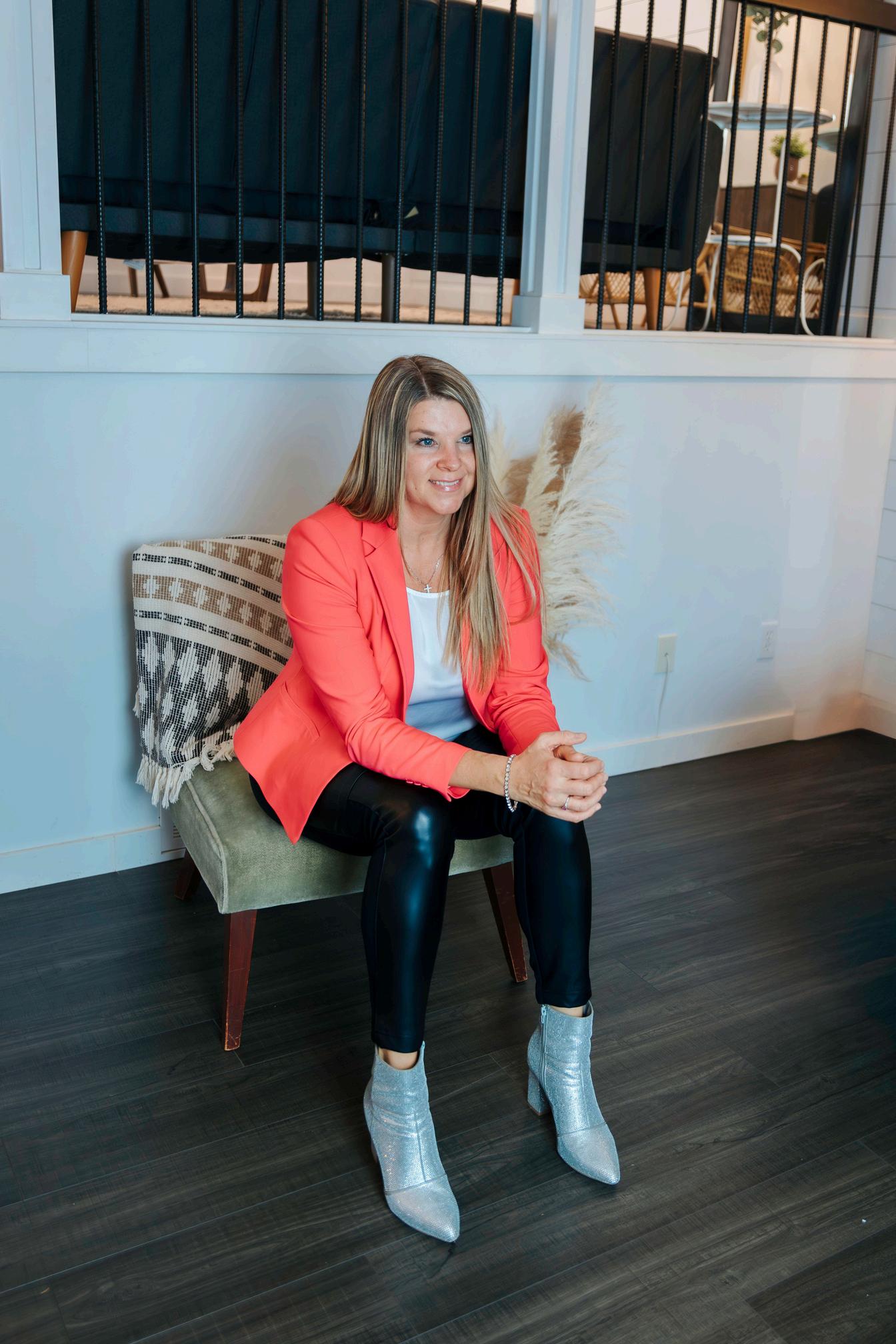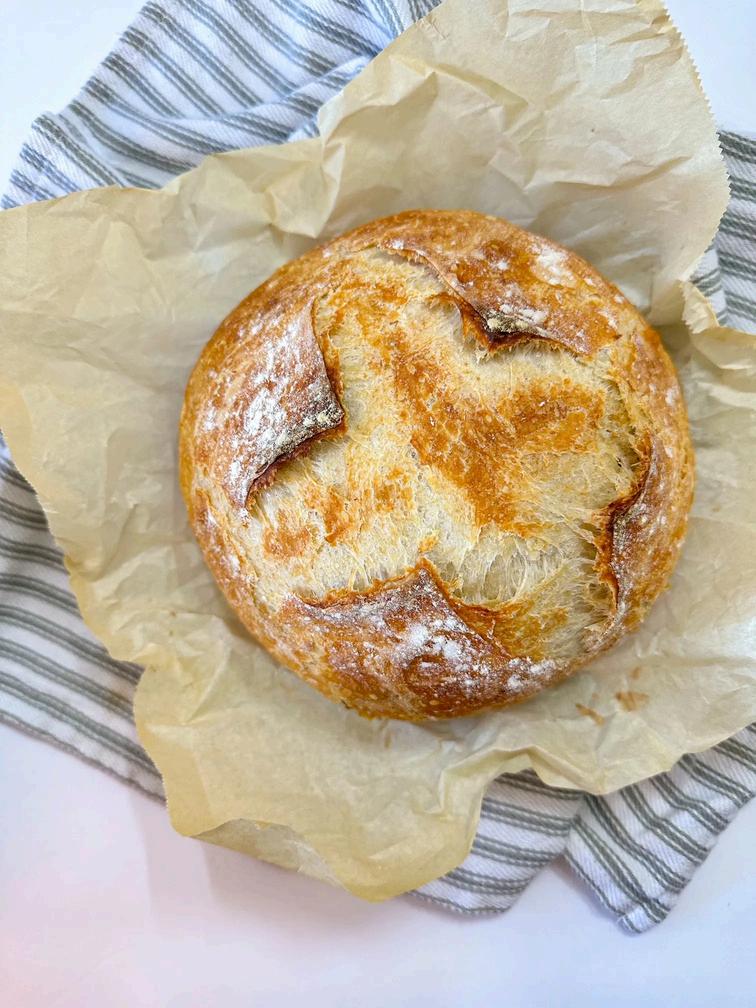
7 minute read
Easy No Knead Crusty Bread
from March 2025
Equipment
Dutch Oven (See notes for alternatives)
Advertisement
Ingredients
3 ¼ Cups All purpose flour
2 Teaspoon Salt
1 Teaspoon Sugar or honey
1/2 Teaspoon Active dry yeast or Instant yeast (see notes for instant yeast)
1 ½ Cups Water
Instructions
Into a large bowl, add your flour, salt, yeast, and sugar and mix. Add your water, mix everything until it just comes together. Do not knead. It will be a sticky and shaggy looking dough but don’t add more flour or water (I know it’s tempting)
Cover the bowl with plastic wrap and a towel, let it rise on the counter or somewhere warm for 12-18 hours (See notes if using instant yeast)
After it has risen, scrape your dough out of the bowl onto a lightly floured surface. At this point you could also divide the dough in half and make 2 smaller loaves.
Shape your dough into a nice round loaf, pinching the bottom to keep it round with a smooth top (Important note: Your dough will be loose and you may not have a firm ball, it will look flat It’s a very moist bread but it will bake perfectly!)
Set your round loaf onto a piece of parchment paper and then back into the bowl. Cover and let rise for and additional 30 minutes
Preheat your oven to 450℉, put your Dutch Oven with the lid on in the oven while it preheats active dry yeast In this case you will only need to let your dough rise for 2 hours before shaping
Once your final rise is done, carefully set your loaf with the parchment paper into your hot Dutch Oven. Cover and bake for 30 minutes.
(Note: If you divided a single recipe into 2 smaller loaves, reduce this time to 25 minutes.)
After 30 minutes take the lid off your Dutch oven to start browning your loaf Uncovered baking time depends on your oven, and how soft OR crusty you like your bread I do 10 minutes uncovered Try 7 minutes uncovered for a softer crust, just keep an eye on it!
Remove your loaf from your baking dish and let it cool completely before slicing (if you can wait that long!) To keep it warm cover with a tea towel. Enjoy!
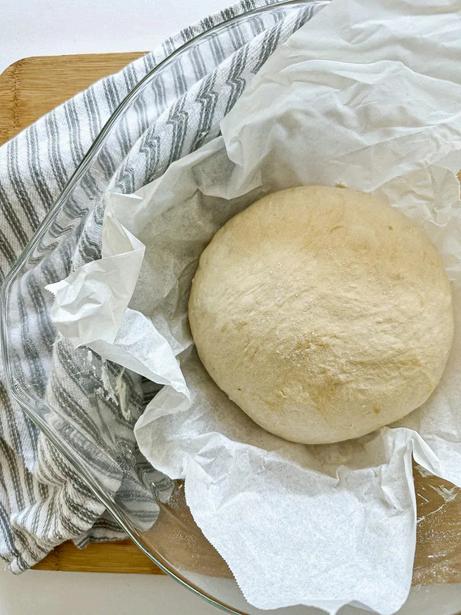
If you don’t have a Dutch Oven, you can use two cast iron pans, one acting as a lid, or an oven safe pot with a cookie sheet lid
Recipe can be doubled in the same bowl and split once proofed to form 2 loaves.
Recipe can also be turned into 2 smaller loaves If you divide single recipe into 2 smaller loaves, reduce covered baking time to 25 minutes and keep an eye on it while you bake uncovered.
If you are adding dried fruit to your bread recipe (like raisins), I do recommend soaking them in hot water while you measure your ingredients, or ahead of time. This helps prevent the fruit from absorbing the liquid that’s needed for your dough Make sure to drain well before adding to the flour mix
Dough can be made ahead and stored in the fridge for a few days.
Bread can be frozen for up to 3 months
The Sprouting Homestead
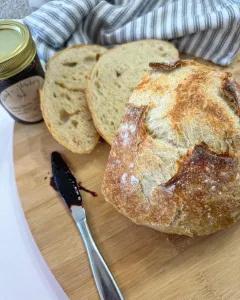

Are Your Relationships Toxic? WITH BRIANNE
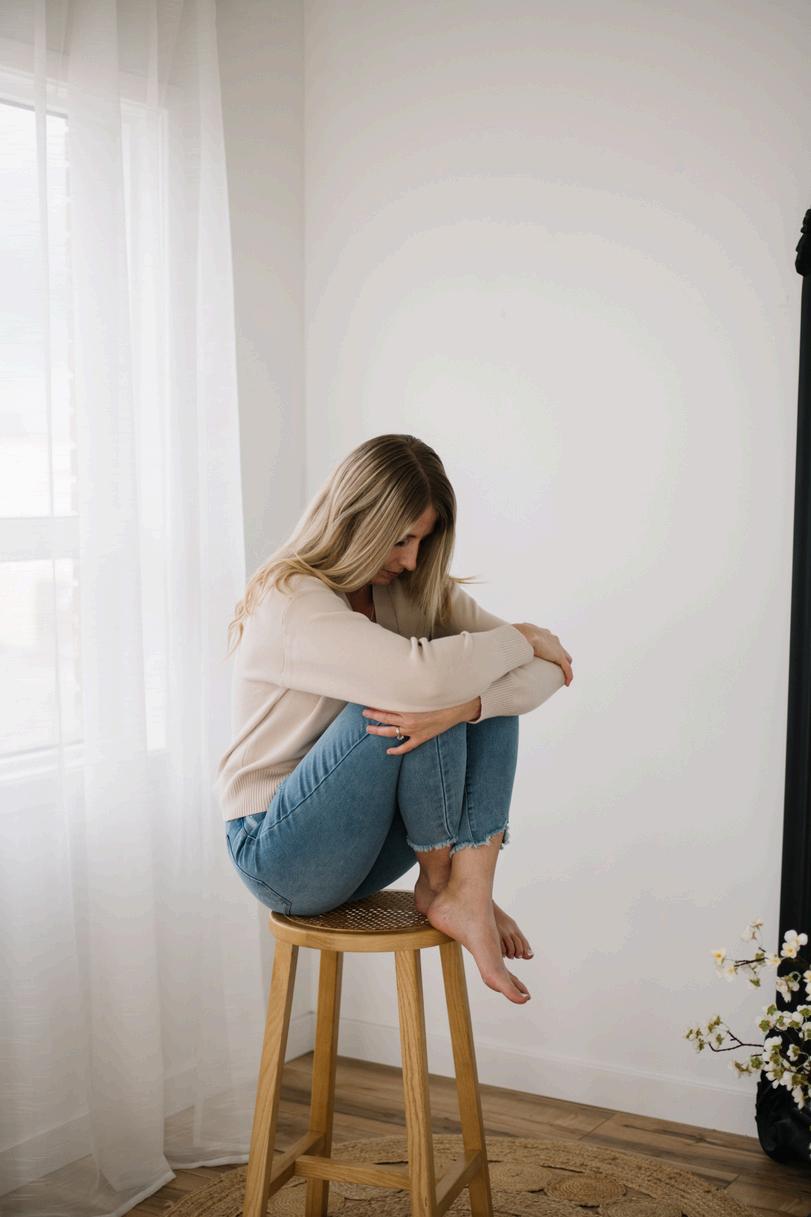
Just as motivational speaker Jim Rohn once said, “You are an average of the 5 people you spend the most time with”.
Whether we are working towards certain goals or in the middle of a healing journey, we are 10x more likely to be successful when the people in our lives hold similar values or are supportive of the changes that are required
In the same breath, when we are trying to do this and the people around us do not value nor support it, we are likely to give up or quit much faster
Not to mention, the effects of a toxic relationship can lead to a significant increase in depression, anxiety, negative self-talk, compulsive or binging behaviour, unstable mood, poor mindset, lack of ambition, disorganization, lack of productivity/focus, and can even affect our physical health- such as our heart rate, blood pressure, oxygen exchange and more
Therefore, it goes without saying that creating awareness around the relationships you hold is crucial– and doing something about the less supportive ones (like setting boundaries), is even more important.
A toxic person is someone that has a negative impact on you or your life, long-term. The pattern of behaviour from these individuals is often hurtful, judgemental and manipulative.
In relationships with these people, we often leave the encounters feeling low or drained, and with a less-than-ideal mood or mindset. This could be anger, annoyance, frustration, sadness or even an overall vibration of negativity, like feeling worse about yourself
These individuals may be manipulative, selfish, and lack empathy for others They often blame others for their mistakes, tend to disregard boundaries, are dishonest, and will often invalidate your feelings
They tend to talk about others behind their back in a negative way, are jealous of the things others have/do, they judge harshly and make others feel bad about themselves, and talk a big ‘talk’ without ever ‘walking the walk’.
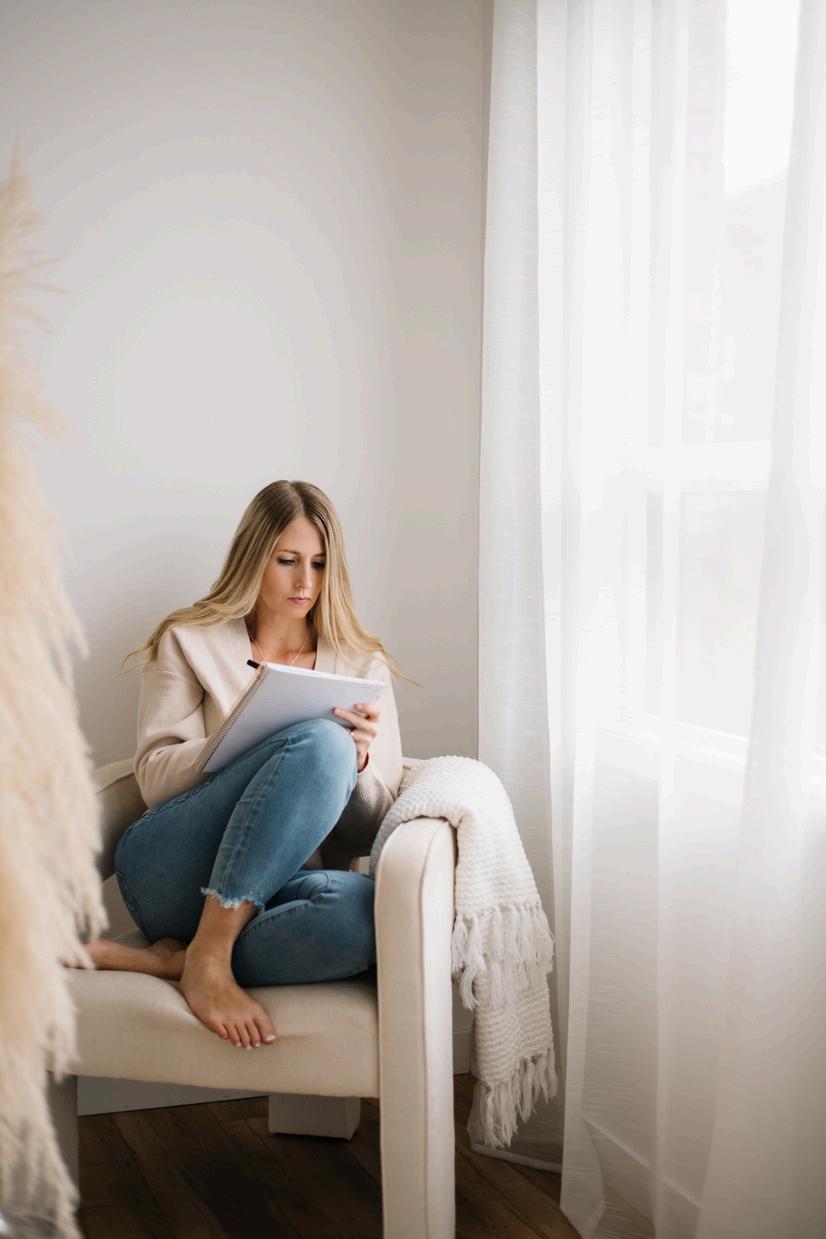
Most importantly, they are ‘takers’ rather than ‘givers’ and will often only come to you in their time of need, rarely being present when you need help
The best way to understand the difference between a toxic relationship and a healthy one is to turn inward and see how you feel before, during, and after your interactions with this person.
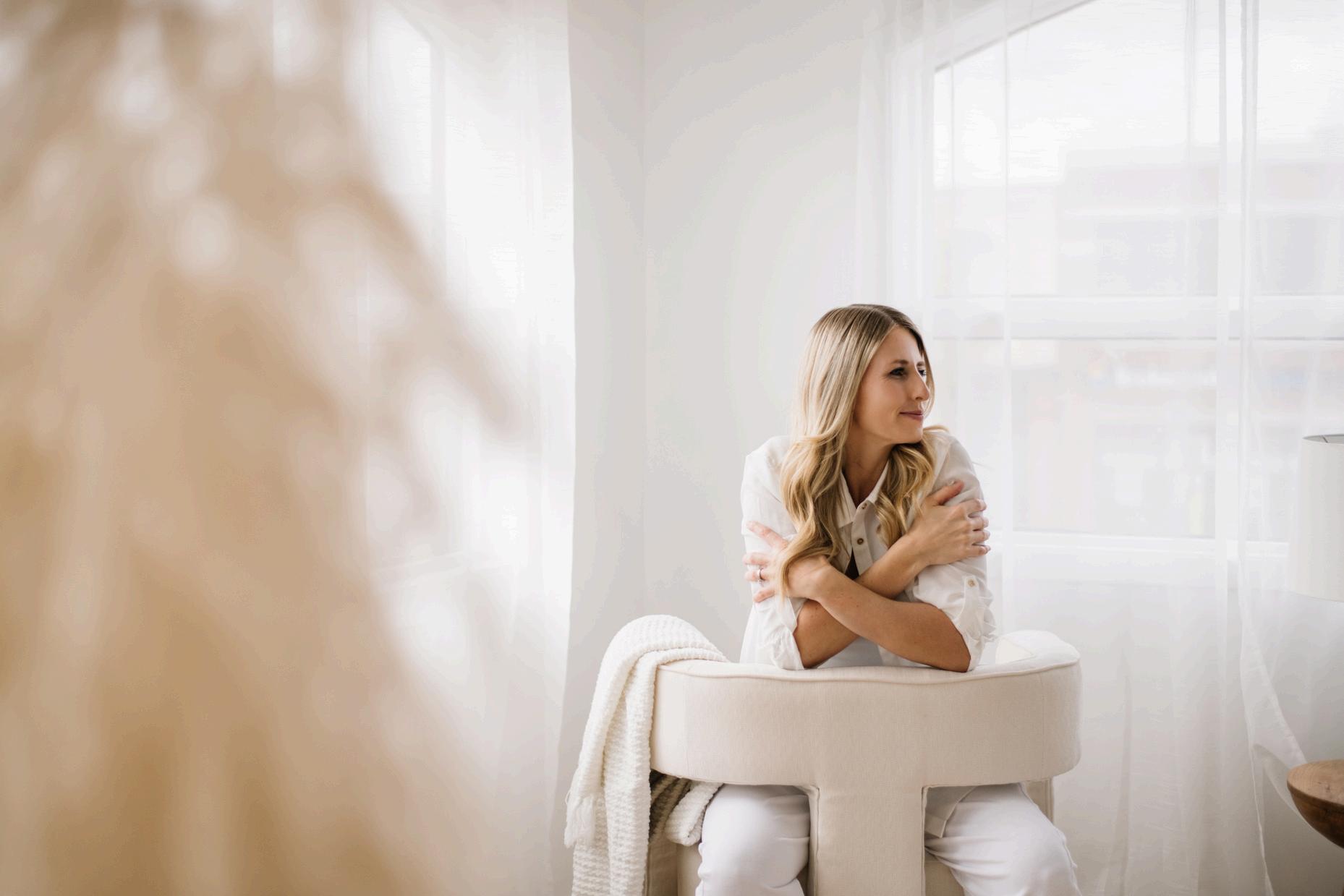
Some great questions to ask yourself are:
Are you dreading seeing/talking to them?
Do you find yourself pre-planning how the conversation will go and coming up with answers or things to say to them?
When you interact with this person, does it feel good?
Do you find yourself coming up with excuses to leave the interaction early?
After you leave the conversation with them how do you feel? (ie happy or drained?)
Is the relationship mutually beneficial in all aspects?
If you’re recognizing that someone in your life might fit this description, then it might be time to consider what you do next. You can either create and maintain boundaries to change the relationship dynamic or, in some cases, it might be more fitting to walk away from the relationship all together.
Only you can decide what feels right, but here are some things to consider:
Creating & Maintaining Boundaries
Sometimes we have people in our lives whom we love and want to keep around, but we also recognize that they have toxic traits or patterns that are causing a negative impact in our lives
Instead of eliminating these people, we want to try and ‘see the good’ and maintain the relationship The way we do this is by creating and maintaining healthy boundaries
Boundaries basically mean that we are deciding what we will no longer tolerate in our lives, and we are changing the dynamic of our relationships to match this new standard.
Boundaries come in all shapes and sizes and what you are comfortable with and what is going to serve YOU the best is up to you. Before implementing anything, I recommend taking some time to think about or journal about the current relationship and ask yourself what you would like to change
For example, perhaps you love your best friend and don’t want to let go of that friendship, but find it is incredibly hard to be around her when you are ‘just talking’ because she is always stuck in a ‘victim loop’ of everything that is going wrong in her life
You note that when you are both engaging in activities together this doesn’t happen, and therefore decide that moving forward your new boundary is going to be to engage in some form of activity each time you get together- like a workshop, class, event, etc.
Not only are you decreasing the chance of this happening, but you are also doing something fun, continuing to build and grow the relationship, and still get to have her remain as an important part in your life.

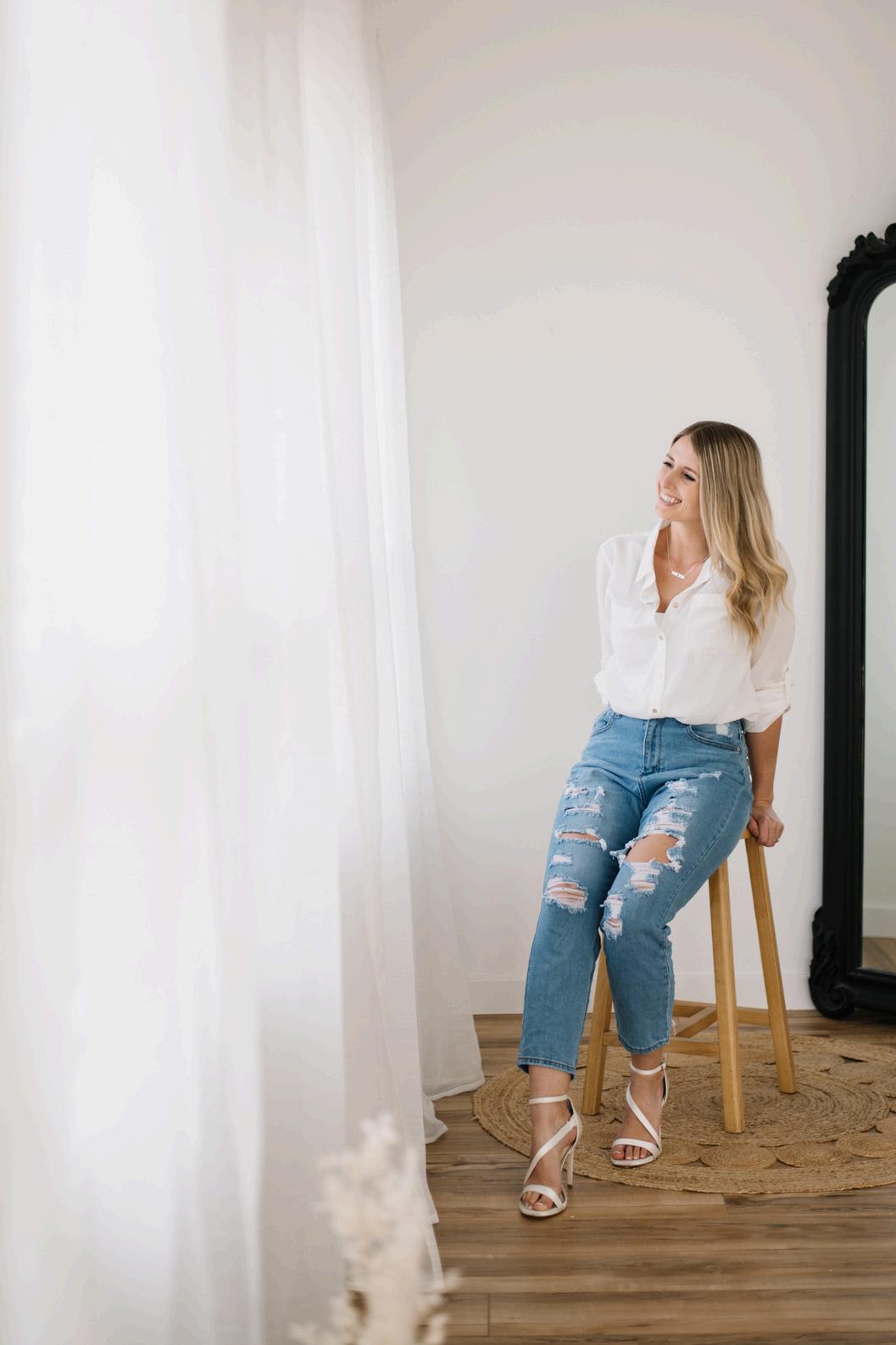
Alternatively, perhaps a boundary in your life might be something as simple as saying ‘no’ more often- especially if this person tends to take you for granted and comes to you only in a time of need.
Boundaries could look like putting certain topics ‘off limits’ to be discussed They could look like restricting the hours/times when you are available to ‘chat’, having an honest conversation about their behaviour/patterns, or changing the expectations for the relationship
Truthfully, there is no right or wrong choices when it comes to boundaries Whatever feels good to you and helps make that relationship feel more aligned with you is a good place to start Tune inward and tap into your heart- what do you think would make the difference in that relationship to help it be more healthy?
Moving On or Letting Go
Finally, sometimes when we are in a relationship we recognize that this person is toxic and needs to be removed from our lives permanently In this case, we understand that this person/relationship is damaging to us and no amount of boundaries are going to make a difference
For instance, think of an abusive relationship, an unhealthy work environment, a narcissistic family member, or someone who constantly judges/criticizes/bullies you, etc. In all of these scenarios, simply changing the dynamic of the relationship and instilling boundaries will likely do nothing to change that relationship or the toxicity.
In all of these cases, ending the relationship is what needs to be done. This might mean breaking up with a partner, eliminating contact with a family member, quitting a job, or ending a friendship- none of which are easy things to do
For this reason, I encourage you to adopt the terminology of ‘moving on’ or ‘letting go’ When we stop looking at a relationship as if we lost that person, and instead think of it as moving on or letting go, we instantly create a more positive separation in our minds
Remember that we are not doing this to be ‘mean’ or ‘selfish’ or anything else our ego might come up with- but instead we are doing this to become our healthiest and happiest selves
As I always say, it is important to fill our own cups first and part of that responsibility means letting go of the things that no longer serve us so that we can show up better in our own lives
The best part about this is that although we are doing this mainly for ourselves, this decision will have an incredibly positive impact on everyone else in our lives as well, allowing us to show up as our best selves for them (and ourselves).
Consider what steps you can take to create a more supportive ‘circle’ in your life moving forward, and best of luck with your journey!
E M B R A C I N G E X E R C I S E
